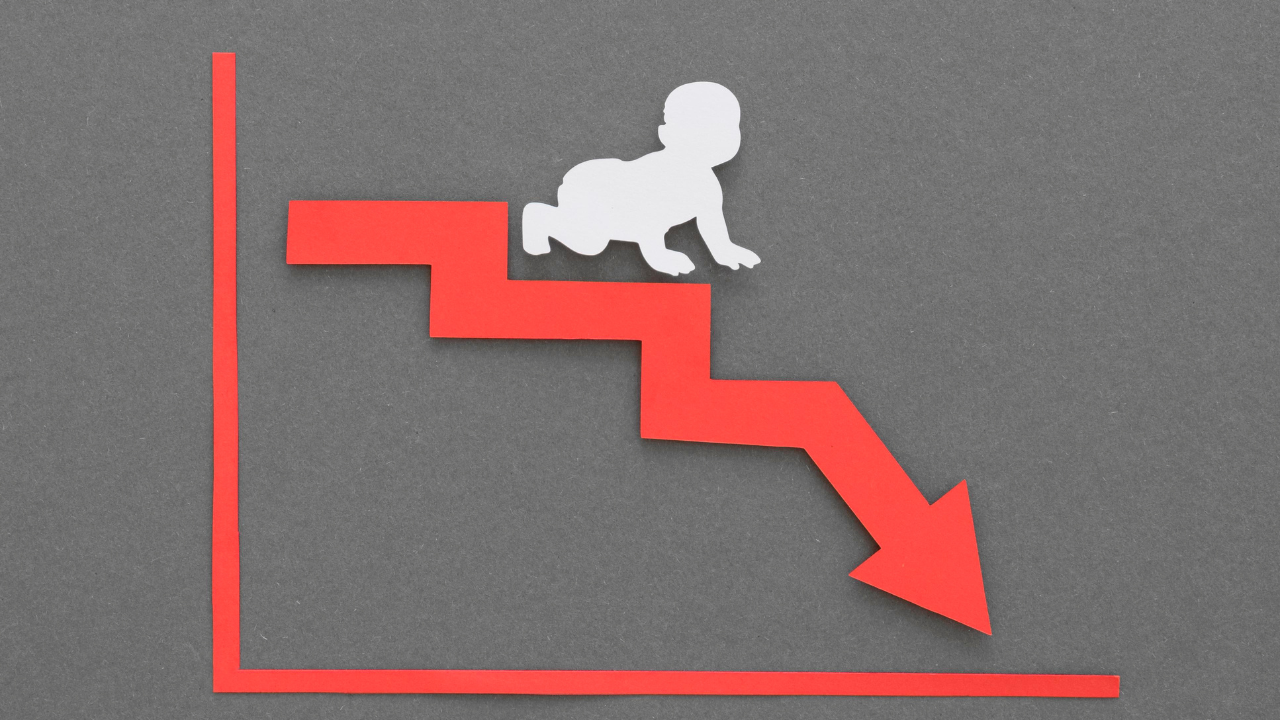China Population
In the world’s second-largest economy, there has been a consecutive decline in population for the second year in a row in 2023. China, through its one-child policy, enforced strict measures to control the population for decades. In 2016, this policy was lifted to encourage childbirth. However, this effort proved unsuccessful, as once a decline in births begins, it is challenging for any country to quickly reverse the trend. On one hand, people in China are getting married later, and on the other hand, many are choosing not to have children due to the substantial expenses associated with education and upbringing. This is the reason why China’s population growth rate has been decreasing since 2016.

Decline in Birth Rate in China
Due to the one-child policy, China experienced a rapid decline in its birth rate, and now, the world’s second-largest economy is grappling with the issue of declining population. Experts believe that in the coming years, this issue in China could become even more severe. According to data from the United Nations Population Fund, India has surpassed China to become the most populous country in the world. India’s population was recorded at 142.86 crores last year, while China’s population is 140 crores. China’s National Bureau of Statistics reported that 90 lakh babies were born in China last year, which is 5% less than the 95.6 lakh babies born in 2022.
Measures Taken by China’s Government to Address the Crisis
China’s government is also concerned about the declining population. In May 2021, the Chinese government announced the implementation of a three-child policy to boost population growth. The government has also introduced incentive programs in several provinces to encourage the birth of second and third children. However, the current figures suggest that these incentive programs have not made a significant impact. Population growth in China has slowed since 2016 due to the increased cost of raising and educating children. As a result, young couples in China are either having fewer children or choosing not to marry.

China is not Alone
In 2023, China’s population decreased to 1.4097 billion, a reduction of 20.8 million, while India became the most populous country in the world in 2023. The United Nations estimates that the number of countries experiencing a decline in population was 41 in 2022 and could increase to 88 by 2050. The most challenging aspect is that, compared to affluent nations, middle-income countries are experiencing a rapid decline in population.
Changes in India Over the Last 50 Years
It took India only 50 years to reduce its total fertility rate from 5 to 2, while it took the UK 130 years to achieve the same. If China continues on a similar path, the aging workforce could impact productivity, affecting long-term economic development. The true extent of India’s situation will become clearer after the census, which is set to begin after the general elections. The government has stated in Parliament that census work will commence after the elections. This will validate the UN’s projection that India has become the world’s most populous country in 2023. Currently, India faces the significant challenge of accelerating its economic progress.
The birth rate in India is less than 2.
Government figures indicate that Indian families now prefer to have only 2 children. In reality, it is 1.6, which is equivalent to Germany. It is clear that in the coming decades, the population growth rate could decline rapidly, and its impact will be seen on the workforce.
Experts suggest that China’s population may also decrease in the next few years. China began recording the birth rate since 1949 and is currently experiencing the lowest birth rate in 2023. Last year, there were 6.39 births per 1,000 people, while in 2022, the number was 6.77. China implemented the ‘Three-Child Policy’ in May 2021 and took several measures to increase the population.
What’s the concern?
The decline in the birth rate has been a long-standing economic and social challenge for China. China’s average population is continuously aging, which could lead to a decrease in the workforce. Over time, this may slow down its economic development. Additionally, providing services for a large elderly population could pose a challenge to the country’s capacity.
The tension is real, and it’s not just about the numbers. It’s about shaping the future and addressing the economic and social implications of changing demographics.











1 COMMENTS